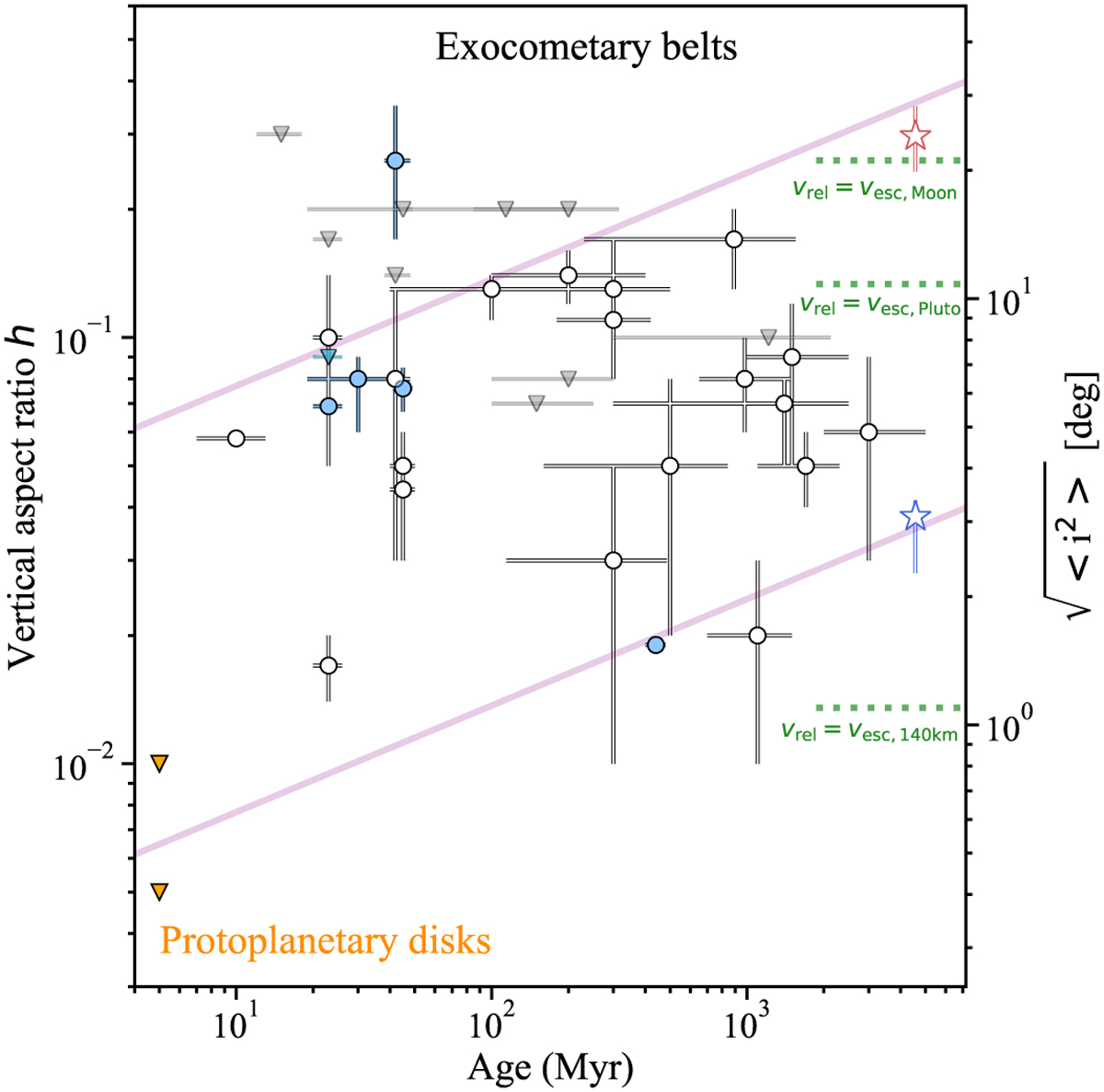Fig. 9

Download original image
Vertical aspect ratios h as a function of host-star age for REASONS planetesimal belts (left y axis), a measure of the RMS inclination of dust grains (right y axis) assuming a Rayleigh distribution of inclinations. Black and white points with errors are measured values. The red and blue star symbols are the observed RMS inclinations of the hot and cold classical populations of Kuiper belt objects (Brown 2001). Purple lines represent the ![]() increase with age expected for planetesimal belts stirred by large bodies, with mass × surface density
increase with age expected for planetesimal belts stirred by large bodies, with mass × surface density ![]() (top) and
(top) and ![]() (bottom), from Ida & Makino (1993). Green dotted lines represent the maximum aspect ratios/RMS inclinations expected for belts with Moon-like, Pluto-like and 140 km-sized stirring bodies (assuming the median stellar host mass and belt radius of the REASONS sample).
(bottom), from Ida & Makino (1993). Green dotted lines represent the maximum aspect ratios/RMS inclinations expected for belts with Moon-like, Pluto-like and 140 km-sized stirring bodies (assuming the median stellar host mass and belt radius of the REASONS sample).
Current usage metrics show cumulative count of Article Views (full-text article views including HTML views, PDF and ePub downloads, according to the available data) and Abstracts Views on Vision4Press platform.
Data correspond to usage on the plateform after 2015. The current usage metrics is available 48-96 hours after online publication and is updated daily on week days.
Initial download of the metrics may take a while.


